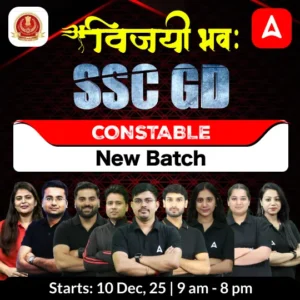The Uttarakhand Subordinate Service Selection Commission (UKSSSC) is one of the most important exams for aspirants aspiring to secure a government job in Uttarakhand. This time a total of 259 vacancies in various Group C posts have been offered for the positions of Additional Private Secretary (APS), Personal Assistant, Stenographer, and Data Entry Operator (DEO) to candidates. We have provided a complete guide regarding the UKSSSC Stenographer Syllabus 2025, which will help candidates understand the exam pattern for better Exam preparation. Read and bookmark this article to stay updated.
UKSSSC Stenographer Syllabus 2025
We have tabulated an overview table for the UKSSSC Stenographer Syllabus 2025 that provides important information for the candidate’s clear understanding:
UKSSSC Stenographer Exam Pattern 2025
The UKSSSC Steno Recruitment 2024 consists of a Written Exam followed by a Skill Test. The final stages involve document verification and a medical test. Here are the details for the Written Exam for candidates:
- Exam Type: Multiple Choice Questions (MCQ)
- Total Questions: 100
- Total Marks: 100 (1 mark per question)
- Negative Marking: 1/4 mark deducted for each incorrect answer
- Duration: 2 hours
| Subjects | No. of Questions | Marks |
|---|---|---|
| General Hindi | 100 | 20 |
| Reasoning Fundamentals of Computer History, Geography, Polity, Economy and Current Affairs | 40 | |
| Various information related to Uttarakhand | 40 | |
| Total | 100 | 100 |
UKSSSC Stenographer Syllabus 2025
Candidates should review the UKSSSC Stenographer Syllabus 2025 for General Hindi, General Knowledge, and General Studies, which are worth 100 marks. Familiarizing yourself with the syllabus in advance will help you achieve the desired success.
General Hindi
This section is for 20 marks which includes General Hindi Language and Literature. Here is the detailed general Hindi syllabus.
1. Language and Hindi language, types of language of Uttarakhand state, development of Hindi language, official language, major dialects of Hindi (Kumauni, Garhwali, Janusri).
2. Script and alphabet: Development of Devanagari script, advantages and disadvantages of Devanagari script, Indian languages written in Devanagari. Vowels and consonants, Hindi numerals.
3. Hindi spelling analysis, correct and incorrect, punctuation marks, Hindi numerals.
4. Word structure: Letter, Syllable, Prefix, Suffix, Noun, Pronoun, Adjective, Adverb, Number, Person, Tense, Case.
5. Vocabulary: Tatten, Tad Bhav, Deshna, Agat (A word in Hindi from Indian and foreign languages), Singular plural, Antonyms (Antonyms), Synonyms.
6. Sandhi: Vowel Sandhi, Consonant Sandhi.
7. Sentence Introduction: Definition of sentence, types of sentences, sentence correction.
8. Parts of Speech, Idioms, Proverbs (Introduction and Sentence Use).
9. Letter Writing: Comments, Drafting, Releases, Government and Semi-Government Letters.
10. Mass Communication and Hindi Computing Various means of communication (media), newspapers-magazines TV (Door darshan).
11. Hindi computing, font, typing, page layout.
General introduction of Hindi literature (as per the Introduction of Hindi Literature (as per Syllabus bus of Uttarakhand state and NCERT up to class 12th)
1. Poetry: Kabir, Sur, Tulsi, Meera, Rakshan, Jaishankar Prasad, Nirala, Sumitranandan Pant, Makhala Chaturvedi, Mukti Bodh, Manglesh Dabral, Rajesh Joshi.
2. Prose: Rahul Sankaradasan, Hazari Prasad Dwivedi, Prem Chand, Mahadevi Varma, Shivani, Pitambar Dutt Badthwal, Harishankar Parsai, Shailesh Matiyani, Manohar Shyam Joshi, Mannu Bhandari, Shekhar
Reasoning Fundamentals of Computer History, Geography, Polity, Economy, and Current Affairs
This section is dedicated to a total of 40 marks for the overall examination. Candidates can score more marks from this section as this contains many areas. Let’s check the syllabus mentioned below and start the exam preparation.
| Nonverbal mental ability test | Verbal Ability Test |
| 1. Mirror and water image 2. Shape creation 3. Series 4. Counting Shapes 5. Similarity 6. Embedded Figures 7. Classification 8. Completion of shapes 9. Paper Folding 10. Shape Matrix 11. Cutting Paper 12. Grouping of Similar |
1. Encoding/Decoding Test 2. Identification of variation 3. Analogy 4. Series test 5. Order arrangement test 6. Direction sense test 7. Number and Time Test 8. Deductive Testing 9. Blood relationship test 10. Artificial form of mathematical symbols to do 11. Classification 12. Article yen weather 13. Mathematical operations. 14. Matrix 15. Meeting Test 16. Sufficiency of Data 17. Input Output Password (computer related) 18. Number and duration of work 19. Calendar 20. Statement, Conclusion, and Conclusion 21. Syllogism 22. Riddle Test 23. Problem-solving 24. Social Intelligence (Moral Ethics) 25. Word formation 26. Clerical Efficiency |
Fundamentals of Computer
We have provided the units under Fundamentals of Computer here. Candidates must check the same.
Unit 1: Basic Concepts
Introduction to Computers, Classification and Generations of computers; Block Diagram of Computes, Hardware, Software, Firmware, Input devices, Manary and Storage Devices, Central Processing Unit, Output devices and Computer Ports, Software: System software and Application Software, Concept of Algorithm and Flowchart, Generations of Programming Languages.
Unit 2: Operating System
Concept of Operating System, Operating System: Open and Proprietary, Versions of Windows, Features of Windows Operating System, Windows Desktop, Booting, Bhut Down and Standby options, Start Menu, Keyboard Shortcuts; Application Management using Control Panel, Installing and Uninstalling a software; System Tools: Disk Cleanup, Disk Fragmentation, Working with Windows Explorer.
Unit 3: Software Packages Word Possessing
Word processing concepts, Working with word document: Opening, Closing and saving options, Editing text, Find and replace text, Language checking and thesauruses, Formatting, spell check, Autocorrect, Auto text; Bullets and numbering, “Paragraph Formatting, Indent, Page Formatting, Hender and footer, Tables, Inserting and importing of tables, filling and formatting a table; Pictures and Video; Mall Merge; Printing documents; Keyboard Shortcuts Spreadsheets: Spreadsheet concepts, Managing worksheets, Formatting of Worksheets and Cells, Entering data, Betting: Printing a worksheet; Organizing Charts and graphs; Formulas and Functions: Handling operators in formula; generally used Spreadsheets functions: Mathematical, Statistical, Financial, Logical, Date and Times; Keyboard Shortcuts Presentation Software Introduction and creation of the presentation, Uss of Templates; Adding new slide, Navigating across slides; Use of Master Slide, slide show, Navigating and Opening of presentation, Text formatting options, Copy, Move, Delete slides, Applying designs, Using Animations, Side Transitions, Insert clip art, Insert sound/movies, Viewing the presentation Taking printout of presentation/Handouts; Keyboard Shortcuts.
Unit 4: Working with the Internet
Basics of Computer Network end Internet, Working with Internet, ISP, Web Browsers, World Wide Web (WWW), Uniform Resource Locator (URL) and Domain Names, Uses of Internet, Concept of Source Engines, IP Address, Applications of Internet, Chatting, Video-Conferencing Email: Account, e-mail Address, configure e-mail Account, log to e-mail, Siding and Receiving s-malls, sending files as attachments, Address Book. Uploading/ Downloading files, Not etiquette, the social impact of ICT in Education, Health care, and Governance
Unit 5: Cyber Security Virus, Worms, Trojan and Anti-Virus software, Spyware, Malware, Spam, Data Backup
and Recovery Tools, Indian IT ACT, Types of Cyber Crime; Firewall, Cookies, Hackers and Crackers, Cyber Security Techniques; Authentication, Encryption, Digital Signatures, Anti-Virus, Firewall, Steganography.
History
Ancient Indian History
1. Sindhu Valley Civilization: Social and Economic Status: Town Planning and
2. Building Construction. Vedic Civilization- Pre-Vedic Period; Social, economic, and religious status: Politics, literature, and religion.
3. Post Vedic Period: Social, cultural, religious, and political life: Literature and religion.
4. Society and politics during the epic period Ramayana and Mahabharata.
5. Establishment, teachings, and development of Jain and Buddhist religions.
6. Mauryan period: Establishment of Maurya dynasty: Chandragupta Maurya, Ashoka and his Dhamma, Mauryan administration, society and art.
7. Post-Mauryan Period Persian, Greek, and Kushan Contacts and their Cultural Influences: Gung Gupta Empire 8. Gupta Rulers, Administration, Society, Art, Literature, Science and Culture.
Gupta Period Harshvardhan: Rajput Ruler, Chola, and Pallava Empire: Indian Social, Economic between 1000-1200.
9. Cultural development and other aspects. *Baran and Turkish invasions. Establishment of Islang. Invasions of Muhammad bin Qasim, Mahmud Ghaznavi and Gauri.
Medieval Indian History
1. Delhi Sultanates- Gulam, Khilji, Tughlaq, Syed, and Lodi dynasties, administration, society, literature, art and architecture, economic policies, empire expansion, and other policies.
2. Bhakti movement and Sufi name movement main chant and their influence.
3. Bahmani and Vijayanagar kingdoms, main rulers and their achievements, impact on literature, art, and culture. Delhi Sultanate-Durga rulers Sher Shah Suri, Nugal system and policies, and Rajput rulers. Art, literature and architecture, Administration of Sher Shah Suri.
4. ‘Maratha and Sikh Relations with the Maratha State and Their Mughals: Sij Guru’s Relationship with Their Mughals.
5. Arrival of British in India- Entry of Portuguese, Chinese and French traders.
6. British East India Company (1787-1865) Expansion of Empire in India, Economic Policy and its Effects: Administrative Governors and Governor General, Charter Act and other Acts: Social Reforms.
7. British Rule (1860-1847) Reasons of Revolt, Main Events and Revolutions.
8. Revolt of 1857: Causes, main events and effects. Viceroy and his policies.
9. Social and economic reform movements in Indian society.
Development of Nationalism in India
1. Indian nationalism due to K. Vikant.
2. Establishment of the Indian National Congress. Moderate and Extremist parties. Lord Curzon and his policies.
3. Partition of Bengal, Swadeshi Movement, Establishment of Muslim League, Surat Session and Division of Congress (1807), Morley Minto Reforms (1909).
4. First World War and National Movement, Home Rule Movement, Lucknow Pact (1918), August Declaration of 1917, Gandhi era, Revolutionary Movement in India and Abroad, Government of India Regulations (1919), Rowlatt Act (1918), Jallianwala Bagh Massacre (13 April 1919), Khilafat Movement, Non-cooperation Movement, Chaurasia incident, Simon Commission, Nehru Report, Jinnah’s 14 Points, Lahore Congress Session, Civil Disobedience Movement Conference, Gandhi Irwin Pact, Second and Third Round Table Conferences, Communal Award and Poona Pact.
5. Government of India Abolition (1330) Demand for Pakistan, Cripps Mission, Quit India Movement, Cabinet Minister, and Army, Interim Government, Maintenance Plan, Indian Independence Act (1947), Partition of India, Major events of subsequent India.
World History
1. Contribution of major philosophers, artists, and scientists related to the Renaissance in Europe. British dynasties- Main events during the times of Henry VIII, Elizabeth, James I, and Victoria. French Revolution.
2. America’s struggle for independence.
3. Sikh Revolution.
4. Main causes of the First and Second World Wars.
Geography of India and the World
Geography of the World – Various branches, Origin of the Solar System, Latitude-Longitude Time, Earth’s Surface, Rotation, Eclipses, Origin of Continents and Oceans, Relief, Mountains, Plateaus, Plains, Lakes, Rocks, Circulation System, Hydrosphere: Sea Salinity, Sea Currents, Tides, Atmosphere: Layers of Atmosphere, Structure, Temperature, Winds, Cyclones, Humidity, Agriculture, Animal Husbandry, Energy and Mineral Resources, Industry, Population, Migration, Species and Tribes, Transportation, Global Warming, Trade (Regional Economic Groups), International Boundaries.
Geography of India: Geographical introduction, relief, and structure, climate, drainage system, natural vegetation, animal husbandry, Soil and water resources, irrigation, Multipurpose Navi Valley Project, Agriculture: Crops, Minerals, Energy resources, People and Urbanisation, Tribes, Migration, Transport, Communication, Foreign Trade, Settlement, Tribes, Environmental Hazards: Disease, Water, Soil pollution, Climate change causes and effects.
Polity
1. National Movement.
2. Because of protection from national awareness.
3. Religious and social resurgence in India.
4. Raja Ram Mohan Roy and Brahmo Samaj.
5. Maharishi Vayananda Saraswati and Arya Samaj.
6. Swami Vivekananda former Rama Krishna Nisham.
7. Spread of English education in India.
8. Indian War of Independence of 1857.
9. India starts printing press (1) Economic exploitation of India.
10. Representation of the Indian National General Assembly, 1885 Partition of Bengal, 1995
11. ‘Vaibhav-Bharat Sanstha’ of Swatantra Veer Vinayak Damodar Savarkar.
12. Non-cooperative movement.
13. Impact of the First World War on Indian Politics.
14. MK Gandhi’s arrival in India.
15. Pellet Composition.
16. Jallianwala Bagh Massacre (15 April 1910).
17. Non-cooperation Movement Positive aspects negative aspects.
18. Reasons for the failure of the Cooperation Movement.
19. Civil Disobedience Movement.
20. Resource Management.
21. Salt Satyagraha-Danki Sooch.
22. Quit India Movement.
23. Impact of the Second World War on Indian Politics.
24. Subhash Chandra Bose and Azad Hind Fauji.
25. August Revolution, 1942
26. Reasons for the failure of the Quit India Movement.
27. Partition of India.
28. Muslim League and its Nauge.
29. Cabinet Mission Plan.
30. Mountbatten Scheme.
31. Due to the partition of India.
32. Gandhism.
33. Gandhiji’s political views: Non-violence (ii) Truth (iii) Satyagraha (iv) Spiritualisation of politics.
34. The idea of Rama-Rajya.
35. Gandhiji’s social views.
36. The Concept of Sarvodaya.
37. Untouchability and prevention of untouchability.
38. The concept of ‘Harijan’.
39. Gandhiji’s economic views.
40. The moral basis of the economy.
41. Principle of Competency.
42. Self-reliance
43. Cottage industry-based financing.
44. Decentralized economy.
45. Indian Polity.
46. Features of the Indian Constitution.
47. Democratic dispensation.
48. Democratic system.
49. The concept of ‘all-religious equality’.
50. Cooperative communication.
51. Inclusion of Fundamental Rights.
52. The concept of fundamental rights.
53. Equality- Freedom- Religious freedom, Fundamental rights against exploitation- Provision of constitutional remedies and their importance.
54. Fundamental duties.
55. Importance of fundamental duties of citizens, development of social cooperation and scientific thinking, environmental protection, respect for the dignity of women, protection of childhood, national unity, and integrity.
56. Policy Directing Elements (Basic Concepts) Liberal, Gandhian, socialist,t and peaceful co-existence at the international level.
57. Conditions for loss of citizenship.
58. National and regional parties.
59. Panchayati Raj system.
60. RTI (2005).
61. Human Rights.
62. International Organisations.
63. Environment, efforts of the UN to prevent violation of human rights.
Economy
Indian Economy
Characteristics of Indian economy, demographic trends, characteristics of Indian agriculture- production, and marketing, agricultural reforms food security, industrial development and problems, small scale industries, micro small and medium industries development and problems, policy, policy commission, money and finance, new economic policy, poverty alleviation and employment generation programs, social security schemes, Indian federal system and tax system, India’s foreign trade trends and direction, balance of payments, external trade policy, World Trade Organisation.
Current events of State, National, and International importance
Countries of the World, Continents, Major Space Events, Religions of the World, Wonders of the World, Indian States, Important Books and Authors of India/World, Important Scientific Discoveries, Famous Scientists, Important Awards, Indian Defence System, Health and Family Welfare, Scientific and Technological Development, Computer Skills, General Science and Technical Knowledge, Education, National Symbols, Famous Religious Places, Important Dates, Major Wars, Major Seas and Oceans, Major Human Rights and Welfare Organizations of the World, Major Languages of India, World Heritage Sites, Major Newspapers, Important Dates, Sports Scenario, Major Sports and Related Terminology, Conferences/Exhibitions/Congresses, Important Reports and Political Events.
Various Information related to Uttarakhand
1. Geographic introduction of Uttarakhand, location and expansion, mountains, peaks, hills, rivers, lakes, natural resources, forest resources, land resources, and population.
2. History of Uttarakhand before the British period and after independence, major dynasties such as Kshatriya rule, Chandra rule, Gorkha, Panwar and British rule, etc., the role of Uttarakhand in the freedom struggle, major freedom fighters and personalities, various movements of Uttarakhand Gamma Kuli Beger, Gadi Sadak, Dola Palki, movements after independence Chipko, Nasha Nahi Rojgar Vo and various aspects of Uttarakhand State Movement, separate Uttarakhand State Movement and recent political developments.
3. Uttarakhand Water Sources, Main Rivers Traditional Water Sources like Naula, Dhara, Pokhara, Chal Khan, Ganga: Traditional means of irrigation like Gul, Canal, Tap well, Hand Pump and various irrigation schemes, River Valley Projects: Present of Rainfed Agriculture in Uttarakhand Problems.
4. Economy of Uttarakhand Agriculture, major crops, commercial agriculture and agricultural problems, horticulture, flower, vegetable, animal husbandry, fish farming, etc., present condition of small and cottage industries like wool, wood, jute, copper industry, etc.,
5. Current conditions of various industries and service sectors in Uttarakhand, employment trends, and crisis of migration. Cultural aspects of Uttarakhand Tradition, lifestyle, language, dialect, folk songs, Kok dance, folk crafts, folk Art, and Nok Music.
6. Social system and demography of Uttarakhand, Zamindari abolition and land settlement in Uttarakhand, rent and Raitwari, Revenue Police System.
7. Education in Uttarakhand: General education, technical education, health, conditions of education and related issues. Tourism in Uttarakhand, religious and cultural tours like Char Dham Yatra, Nanda Rajjat, spiritual tours, etc., major picturesque places, adventure tourism like mountaineering, rafting, trekking, etc., rail, air and rapid transport, and related problems.
8. Environmental, and ecological conditions in Uttarakhand, water and air pollution, cloud bursts, deforestation, forest fires, night storms, drought and other natural calamities, and ecological problems.
9. State’s General Questionnaire Arrangements and Innovative Schemes/Initiatives.
10. General administrative system and important schemes of the state.
11. Statistical data released by the State and related developments.
12. Biodiversity in Uttarakhand.
13. Other Miscellaneous Matters
UKSSSC Skill Test 2025
The UKSSSC Skill Test for 2025 includes two components: The typing test and Hindi Stenography.
- Hindi Stenography: Candidates must achieve a speed of 80 words per minute.
- Typing Test: Candidates need to complete 4000 key depressions on the computer.
UKSSSC Stenographer Selection Process 2025
The selection process for the post of UKSSSC Stenographer has been discussed here. The candidates need to go through each stage of selection to get an appointment in UKSSSC. Candidates need to qualify for each stage for the final selection.
- Written Exam
- Skill Test (Stenography Test)
- Document Verification
- Medical Examination

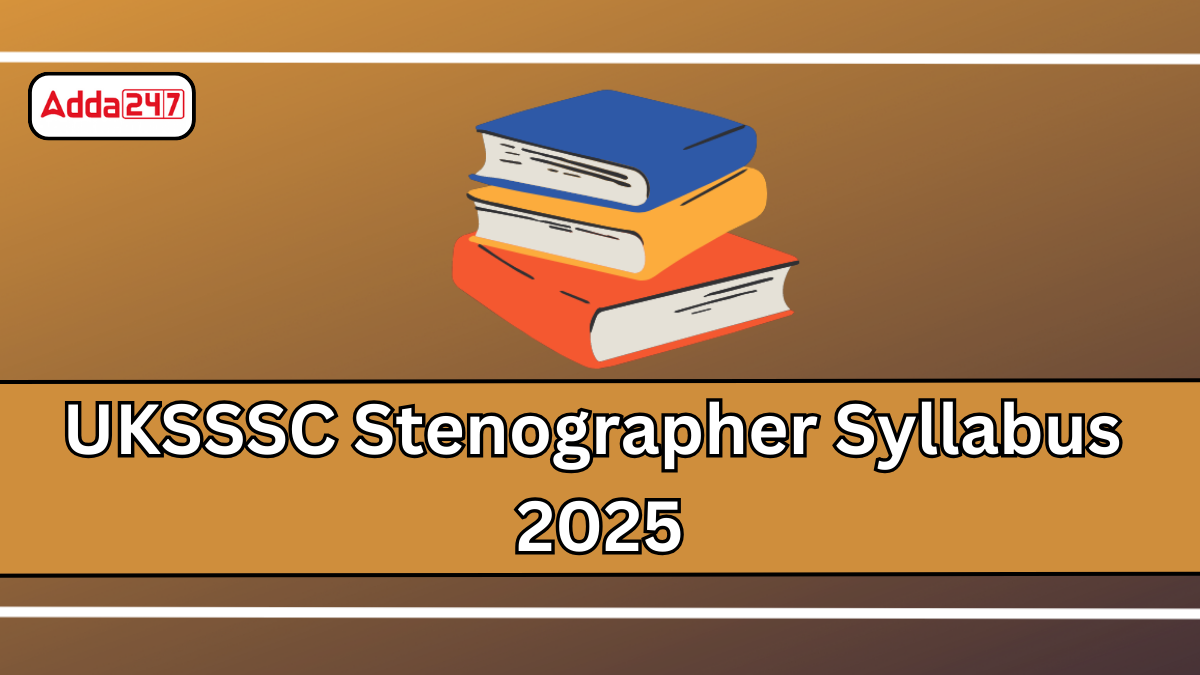
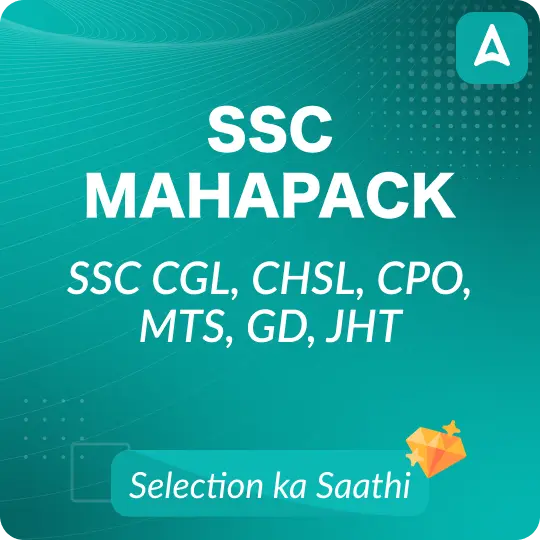

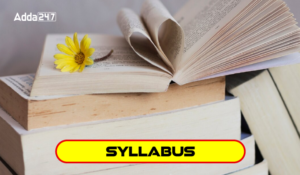 DSSSB MTS Syllabus 2026, Exam Pattern an...
DSSSB MTS Syllabus 2026, Exam Pattern an...
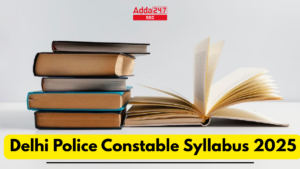 Delhi Police Constable Syllabus 2025 and...
Delhi Police Constable Syllabus 2025 and...
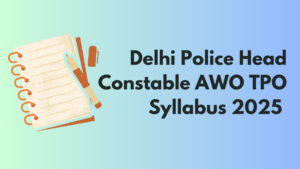 Delhi Police Head Constable AWO TPO Syll...
Delhi Police Head Constable AWO TPO Syll...
